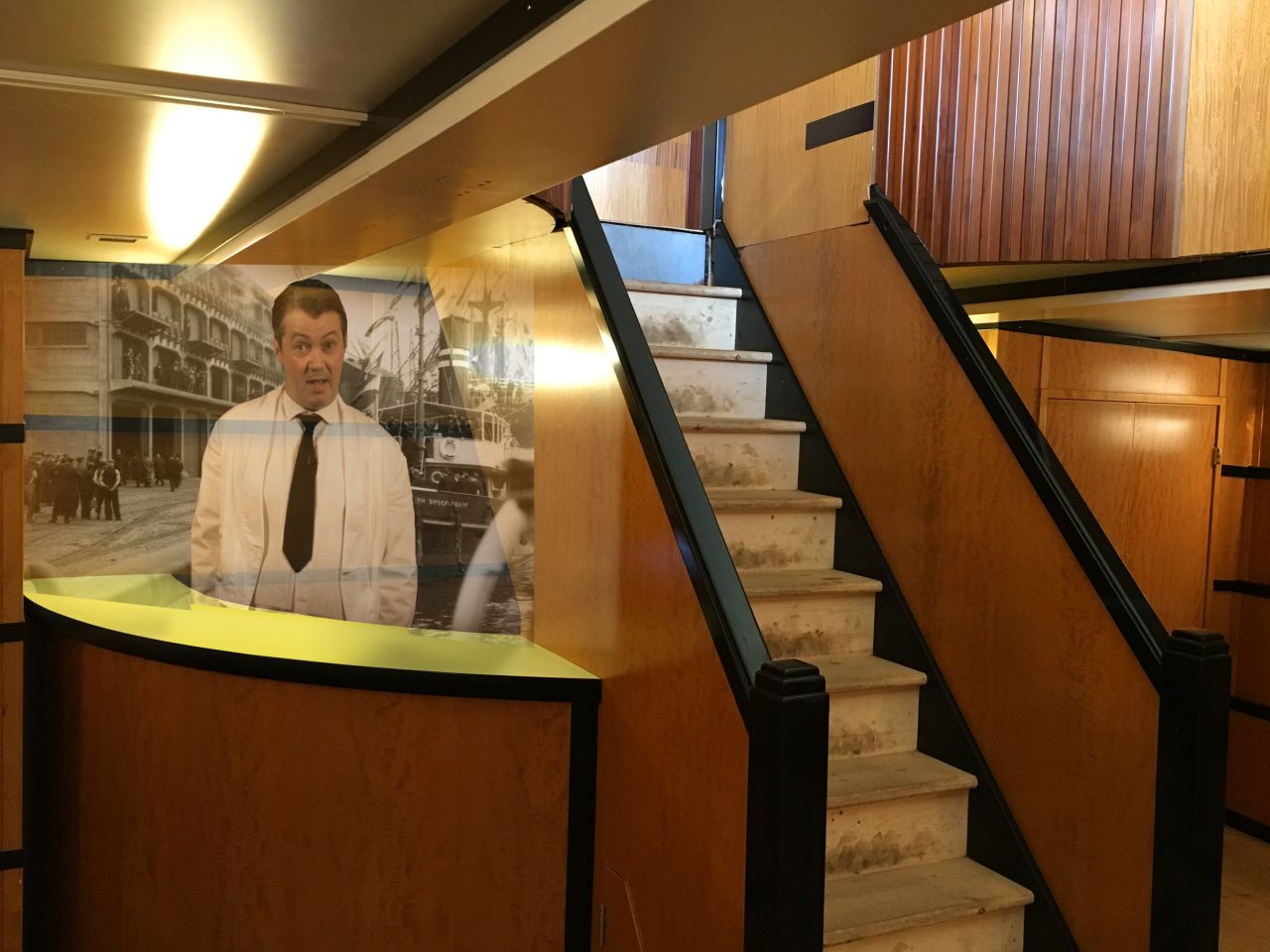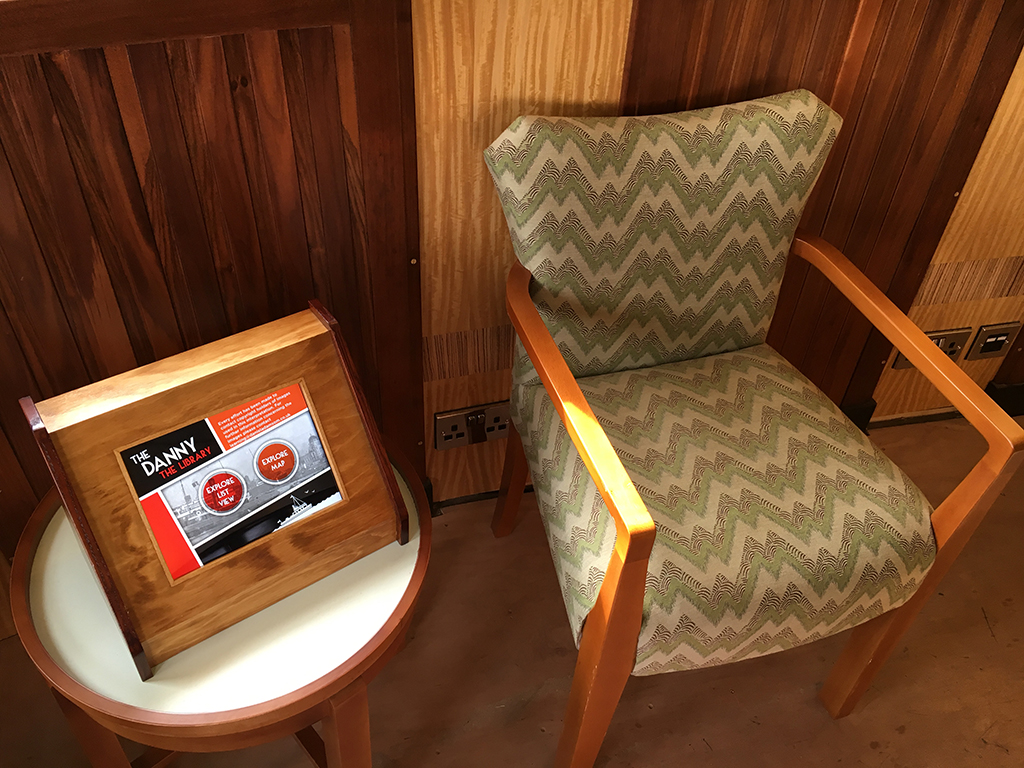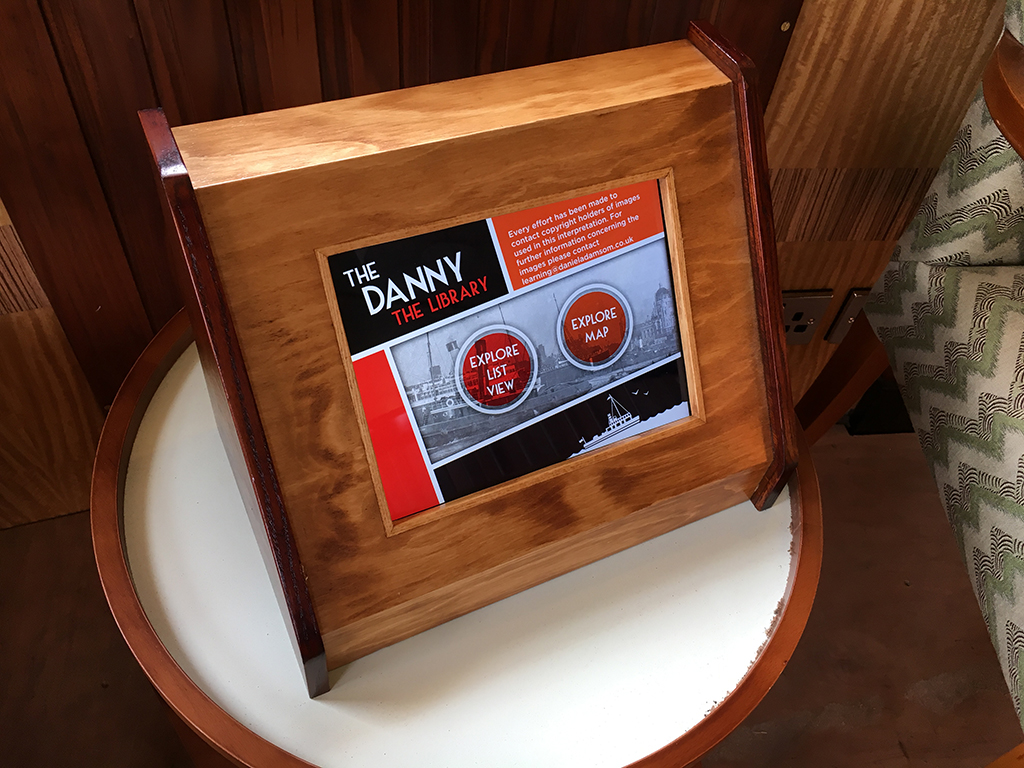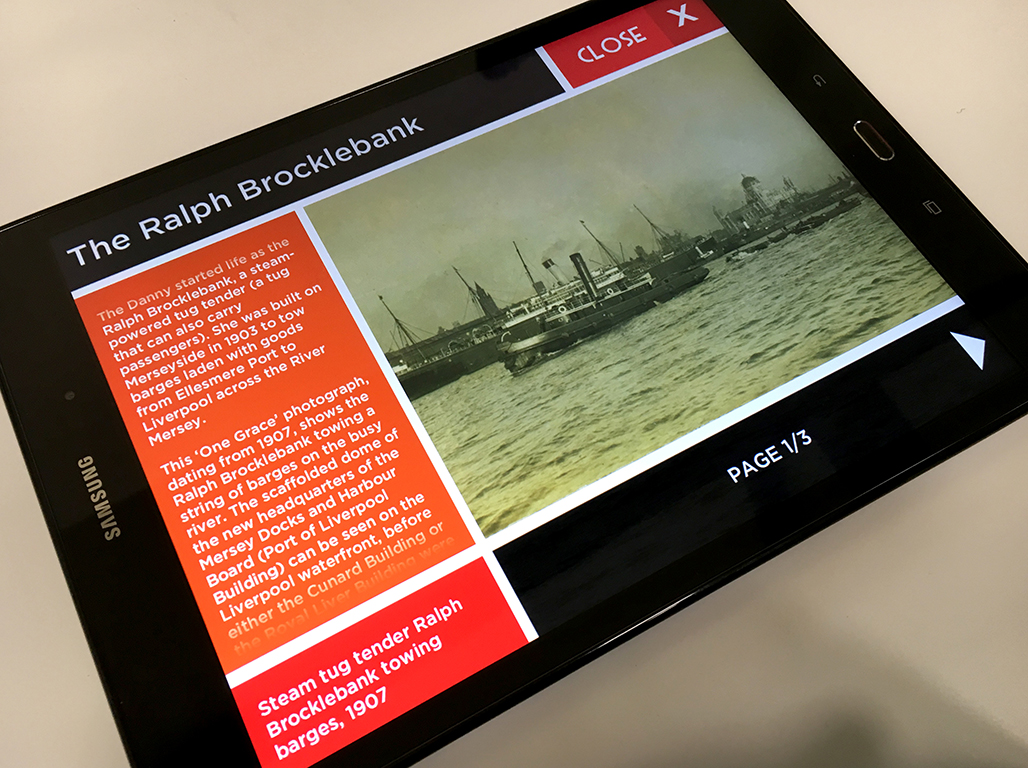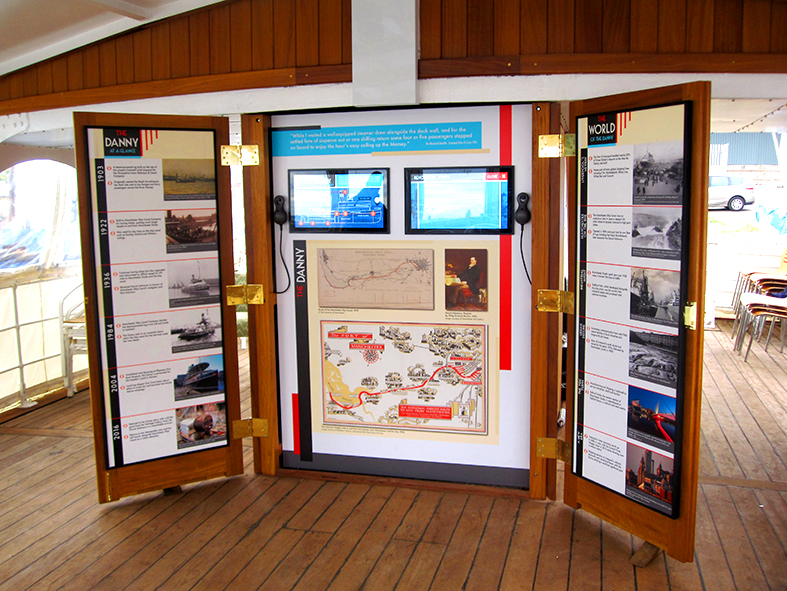The Daniel Adamson is a restored working tug tender, the subject of a recent £3.8m HLF award. The project presented an interesting challenge to use technology to interpret the history of a unique and historic vessel, one of only two surviving tug tenders in the UK and the only surviving steam powered tug tender. We came up with some creative ways to maximise this unusual space.
As a working vessel, it presented a number of environmental and health and safety issues and its size and shape meant that there were limited opportunities to use traditional interpretation methods. With the restoration of a stunning art deco lounge being part of the project, there were also been limitations on how much fixed technology we could use.
We found the answer to these challenges in the use of mobile tablets and integrating atmospheric exhibits into the infrastructure. These included evocative audio and a recreation of the ghost of a barman in the lounge who relates stories from the Daniel Adamson’s varied history.
The unusual space also provided interesting opportunities to develop approaches to interpretation that are very personal to the location. On a practical note, we chose hardware suitable to the rigours of a marine environment in the form of IP rated marine grade hardware that will cope with the inevitable demands of high moisture levels, wide-ranging temperatures and strong sunlight.
As a working vessel, it presented a number of environmental and health and safety issues and its size and shape meant that there were limited opportunities to use traditional interpretation methods. With the restoration of a stunning art deco lounge being part of the project, there were also been limitations on how much fixed technology we could use.
We found the answer to these challenges in the use of mobile tablets and integrating atmospheric exhibits into the infrastructure. These included evocative audio and a recreation of the ghost of a barman in the lounge who relates stories from the Daniel Adamson’s varied history.
The unusual space also provided interesting opportunities to develop approaches to interpretation that are very personal to the location. On a practical note, we chose hardware suitable to the rigours of a marine environment in the form of IP rated marine grade hardware that will cope with the inevitable demands of high moisture levels, wide-ranging temperatures and strong sunlight.
